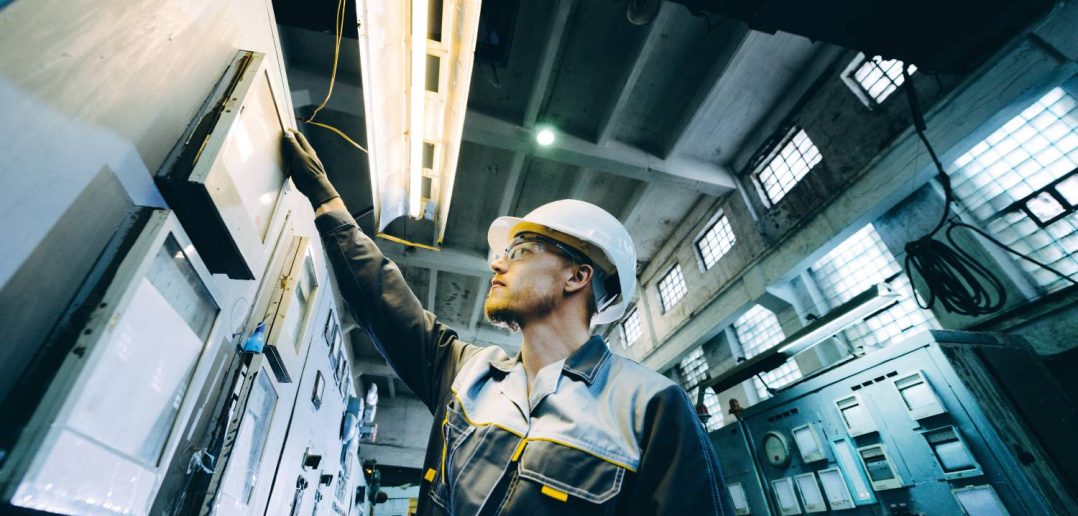The need to use less energy is becoming critical to manufacturers worldwide. The transition to a clean energy economy drives new developments in the energy sector. Manufacturers must find ways to reduce energy use to stave off growing internal production costs and remain competitive.
Let’s discuss why the global energy crisis significantly impacts manufacturing – and three ways technology helps tackle the issue head-on.
As energy costs rise, manufacturing costs increase
Manufacturers in heavy industries (steel, chemicals, paper, glass and cement) perform large amounts of energy-intense processes operating at high temperatures. Therefore, the cost of energy is very important to them. According to the International Energy Agency (IEA), the industrial sector accounted for 38% of total global final energy use in 2021.
The cost of energy globally surged 60% in 2022 to record highs. Though the World Bank predicts both natural gas and coal prices overall will decline by 11% in 2023, this overall increase still has a major impact on production costs.
In its World Energy Outlook 2022, the IEA says, “The world is in the middle of a global energy crisis of unprecedented depth and complexity.” The effects of the crisis are far-reaching, with the potential for energy rationing, shortages, fuel supply disruptions and rolling blackouts.
When rising prices and energy shortages combine, manufacturers have little choice but to use less energy to protect their operations from increasing costs and reduced availability.
Related: Adjusting to disruption and uncertainty in energy has become the norm. Learn ways that your energy organization can stay resilient amid these changes.
How manufacturers can use technology to reduce energy usage
The International Data Corporation (IDC) says that by 2024, “The top five companies in each sector will be those that used technology to innovate their way out of a global crisis ... And AI-driven advanced analytics is the right technology for manufacturers to stay ahead of the crisis."
Energy challenges are here to stay and will likely not improve anytime soon. So what can manufacturers do quickly to reduce usage without overhauling production operations? Here are three ways manufacturers can realize major energy-saving benefits by implementing AI and advanced analytics into their processes.
1. Optimizing energy usage
Advanced analytics can optimize production and operational efficiency to support sustainability efforts. In The Future of Manufacturing 2022 report, Forrester states that manufacturers are “repurposing existing investments in IoT to deliver actionable data on the connection between energy and production, supporting strategic initiatives to cut waste and boost useful output.” For example, Forrester notes in its Predictions 2023: Smart Manufacturing report that global Bosch factories have been carbon neutral since 2020, and AI and IoT solutions were critical in achieving that objective.
2. Analyzing big data
By analyzing the massive amount of IoT data in a plant, AI and advanced analytics can determine where excess energy is being used, identify optimum shift parameters for each process and make recommendations on exact process setpoints that will minimize consumption without affecting yield or quality.
3. Maximizing quality control
If quality is low, manufacturers can also use AI to make improvements. Poor-quality goods result in excess scrap and waste, leading to reworked products requiring additional energy. This unnecessary use of resources causes a different carbon footprint and increases production costs. Advanced analytics helps increase first-pass yield, reduce waste and lower inefficiencies by identifying the root cause of quality control problems – and predicting and preventing them.
Wienerberger AG's AI-driven strategy with SAS® Viya® on Microsoft Azure
Wienerberger is the world’s largest producer of bricks. The company’s Poland plant makes about 1,000 tons of bricks daily, and the energy needed to produce them is gas, which creates about 60% of the plant’s CO2 emissions.
The company noticed high fluctuations daily in its production process, caused by hundreds of factors that resulted in unacceptable costs and energy consumption. Wienerberger brought in SAS to develop a solution to the fluctuations and their impact on energy usage and pilot it at the Poland plant.
SAS® Viya® on Microsoft Azure was used to develop SAS Energy Cost Optimization, which improved the clay brick factories' ability to handle sometimes dramatic fluctuations in energy consumption during phases of the manufacturing process.
“What we appreciate most about working with SAS is how they help our joint customers realize their energy cost optimization strategies using the power of data and analytics. Leveraging Microsoft Azure, SAS is driving a manufacturing evolution by giving businesses the insights they need to make informed, actionable decisions that solve their production challenges, lower costs, reduce emissions, and reach their sustainability goals with SAS advanced analytics, AI and machine learning," says Dominik Wee, Corporate Vice President of Manufacturing & Mobility at Microsoft.
Time is of the essence
Manufacturers face an energy crisis that has the potential to reshape where and how goods are produced dramatically. Manufacturers that invest in AI and advanced analytics are in the best position to become industry leaders that turn a crisis into an opportunity.

